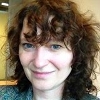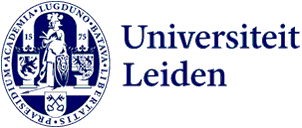17 search results for “the skeleton as a source of information” in the Public website
-
 Claire Weeda
Claire WeedaFaculty of Humanities
c.v.weeda@hum.leidenuniv.nl | +31 71 527 2718
-
Bone Under the Microscope
This project unites these two perspectives by taking a deep dive into the microstructure of historic Dutch bones. We will study human skeletal remains curated at the Faculty of Archaeology by micro-CT scanning them at LUMC facilities. With detailed micro-CT scans, we can examine bone quality in the…
-
Osteoarchaeology in historical context
Osteoarchaeology is a rich field for reconstructing past lives in that it can provide details on sex, age-at-death, stature, and pathology in conjunction with the cultural, social, and economic aspects of the person’s environment and burial conditions. While osteoarchaeological research is common in…
-
CT Scanning Skeletal Remains
CT scanning of skeletal remains can tell us about how strong or weak a persons bones were and we can relate that back to diet, activity, and reproductive factors.
-
Activity, Diet and Social Practice
Day-to-day activities are important in the development of social identities, the establishment of social standing, and the communal understanding of societal rules. This perspective is broadly referred to as practice theory and relates to the power of an overarching social structure and the individual…
-
Mapping Medieval Malaria
This research project studies the distribution and impact of medieval malaria in the Netherlands.
-
 Alexandra Tutwiler
Alexandra TutwilerFaculty of Archaeology
a.a.tutwiler@arch.leidenuniv.nl | 071 5272727
-
 Cora Tabea Leder
Cora Tabea LederFaculty of Archaeology
c.t.leder@arch.leidenuniv.nl | 071 5272727
-
 Lotte Nagelhout
Lotte NagelhoutFaculty of Archaeology
l.nagelhout@arch.leidenuniv.nl | 071 5272727
-
 Maia Casna
Maia CasnaFaculty of Archaeology
m.casna@arch.leidenuniv.nl | +31 71 527 2727
-
 Rachel Schats
Rachel SchatsFaculty of Archaeology
r.schats@arch.leidenuniv.nl | +31 71 527 1925
-
 Rachael Hall
Rachael HallFaculty of Archaeology
r.a.hall@arch.leidenuniv.nl | +31 71 527 2727
-
Saqqara Excavations and Fieldschool (Egypt)
Our recent excavations have focused on the more recent New Kingdom/Late Period (ca. 1500-332 BCE) material.
-
 Sarah Schrader
Sarah SchraderFaculty of Archaeology
s.a.schrader@arch.leidenuniv.nl | +31 71 527 1685
-
Wearing clogs may have caused foot problems
Research by bioarchaeologists from Leiden and Canada has shown that 19th-century Dutch farmers regularly had bone defects. These may have been caused by wearing clogs. Publication in the International Journal of Paleopathology.
-
Old protein distinguishes bone fragments of Neanderthals
Bone remains that are thousands of years old are often too fragmented to be identified. PhD candidate Frido Welker is the first person to be able to distinguish human bones from one another on the basis of old proteins. PhD defence 18 May.
-
New method of determining geographic origin of humans
Leiden researchers have developed a new method of determining the geographic origin of humans. Archaeologist Jason Laffoon and his team used the technique to discover where precolonial pioneers in the Caribbean region came from.
